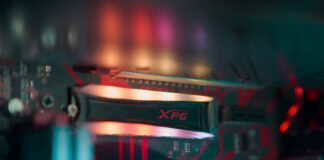Robot sensors and actuators play a pivotal role in the functionality and operation of modern robotic systems, enabling them to interact with their environment and perform tasks with precision and efficiency. These components form the sensory and motor systems of robots, facilitating the acquisition of data and the translation of that data into physical actions. Robot sensors act as the sensory organs, allowing robots to perceive and understand the world around them, while actuators function as the muscles, enabling robots to carry out specific tasks through mechanical movements. Together, these components create a sophisticated interplay that empowers robots to navigate complex environments, interact with objects, and execute intricate operations, contributing significantly to various fields such as manufacturing, healthcare, space exploration, and more.
Robot sensors and actuators are instrumental in the advancement of robotics, providing the necessary tools for robots to operate autonomously and effectively in diverse settings. The integration of various types of sensors and actuators enables robots to exhibit intelligent behavior, making decisions based on real-time data and interacting seamlessly with their surroundings. These components are designed to replicate the human sensory and motor systems, enabling robots to perceive and respond to changes in their environment, thus enhancing their adaptability and versatility in performing a wide range of tasks. From detecting and identifying objects to executing complex movements, the intricate interplay between sensors and actuators is crucial for the overall functionality and success of robotic systems in numerous applications.
Robot sensors serve as the critical interface between the robot and its environment, allowing the robot to gather information and make informed decisions. These sensors come in various forms, each designed to detect specific physical properties or environmental stimuli. Some of the most common types of robot sensors include proximity sensors, which enable robots to detect the presence of nearby objects or obstacles, and tactile sensors, which provide robots with the ability to perceive and respond to touch and pressure. Additionally, vision sensors play a vital role in enabling robots to perceive the visual world, allowing them to recognize objects, navigate through complex environments, and interact with objects with precision and accuracy. By providing robots with the ability to perceive their surroundings, these sensors enable them to make informed decisions and adapt their behavior based on real-time data, thereby enhancing their overall performance and functionality.
Actuators, on the other hand, are responsible for translating the decisions made by the robot’s control system into physical actions and movements. These components enable robots to perform a diverse range of tasks, from simple movements such as picking up an object to more complex actions such as walking, lifting, and manipulating objects with dexterity and precision. Actuators come in various forms, including electric, pneumatic, hydraulic, and piezoelectric actuators, each offering unique capabilities and advantages depending on the specific requirements of the robotic application. Electric actuators, for instance, are widely used for their precise control and quick response, making them ideal for applications that demand high accuracy and repeatability. Pneumatic actuators, on the other hand, are known for their high force-to-weight ratio and simple design, making them suitable for applications that require rapid and powerful movements. Similarly, hydraulic actuators are preferred for their high power density and ability to generate significant forces, making them well-suited for heavy-duty applications that involve lifting and manipulating heavy objects. Piezoelectric actuators, characterized by their rapid response and high precision, are commonly used in applications that require precise positioning and fine-tuning.
The seamless integration of sensors and actuators enables robots to perform a wide range of tasks with precision and accuracy, making them valuable assets in various industries and applications. In manufacturing, robots equipped with an array of sensors can efficiently perform tasks such as material handling, assembly, and quality control, contributing to increased productivity, improved product quality, and reduced operational costs. In the field of healthcare, robots equipped with advanced sensors and actuators can assist in surgical procedures, patient care, and rehabilitation, enhancing the overall efficiency and accuracy of medical interventions and treatments. Moreover, in the realm of space exploration, robots equipped with sophisticated sensors and actuators can navigate and explore extraterrestrial environments, collect data, and perform tasks that would otherwise be challenging or impossible for humans to accomplish, thereby expanding our understanding of the universe and paving the way for future space missions and discoveries.
The continuous advancements in sensor and actuator technologies have led to the development of more sophisticated and intelligent robotic systems capable of performing complex tasks with a high degree of autonomy and efficiency. Emerging technologies such as artificial intelligence, machine learning, and advanced materials are further revolutionizing the capabilities of robot sensors and actuators, enabling robots to learn and adapt to dynamic environments, interact with humans in more natural ways, and perform tasks with greater precision and dexterity. Furthermore, the integration of sensor fusion and data processing techniques allows robots to combine data from multiple sensors, enabling them to obtain a more comprehensive and accurate understanding of their surroundings, thus enhancing their decision-making capabilities and overall performance.
As the field of robotics continues to evolve, the development of advanced sensor and actuator technologies remains a key focus, driving innovation and unlocking new possibilities for the application of robotic systems in various industries and domains. Research efforts aimed at enhancing the sensitivity, accuracy, and efficiency of sensors, as well as improving the performance, reliability, and versatility of actuators, are critical for the continued advancement and adoption of robotics in diverse sectors. By leveraging the capabilities of advanced sensors and actuators, researchers and engineers can design and develop robots that are not only more capable and efficient but also more adaptable and resilient, thereby expanding the potential applications and impact of robotics in addressing complex challenges and driving technological progress in the years to come.
In conclusion, robot sensors and actuators form the cornerstone of modern robotics, enabling robots to perceive their environment, make informed decisions, and execute precise actions with accuracy and efficiency. These components play a crucial role in enhancing the functionality and versatility of robotic systems, making them invaluable tools in various industries and applications. With continuous advancements in sensor and actuator technologies, the capabilities of robots are expected to further expand, allowing them to operate in increasingly complex and dynamic environments, and to perform tasks that were once deemed challenging or impossible. The integration of advanced materials, artificial intelligence, and sensor fusion techniques will continue to drive innovation in the field of robotics, opening up new possibilities and opportunities for the application of robotic systems in diverse domains and sectors. As a result, the future of robotics holds immense promise, with the potential to revolutionize industries, improve human lives, and drive significant technological advancements for the betterment of society as a whole.














